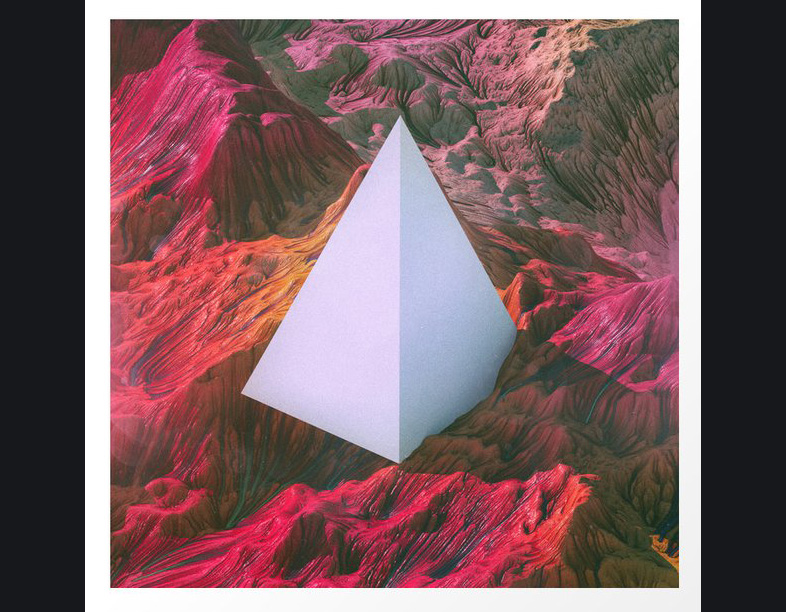Key Points:
- The great sages mused ambivalently yet decisively on solitude, seclusion and isolation—just not the pandemic-induced or digital kind.
- The new lonerism: Covid-19 opened the door to embrace—or flee—a novel array of “comfort addictions” and agoraphobic traps as life’s guideposts tilt into uncharted territory.
- Uninhabited tracts of countryside still retain their power to quietly council those who find platitudinous bromides like “we’re all in this together” oversimplified or boring.
- American cities contain their own deserted wastelands, parts of which left urbanites socially stranded long before the viral storm arrived.
- Cut-off logic and the base requirement for humor: I keep thinking “how do I make this funny?” And it just doesn’t happen, because it cannot happen without other people.
- Companion article to nine 2020 images of Joshua Tree and Palm Springs (some of which appear below; see full set in the photo section).
…
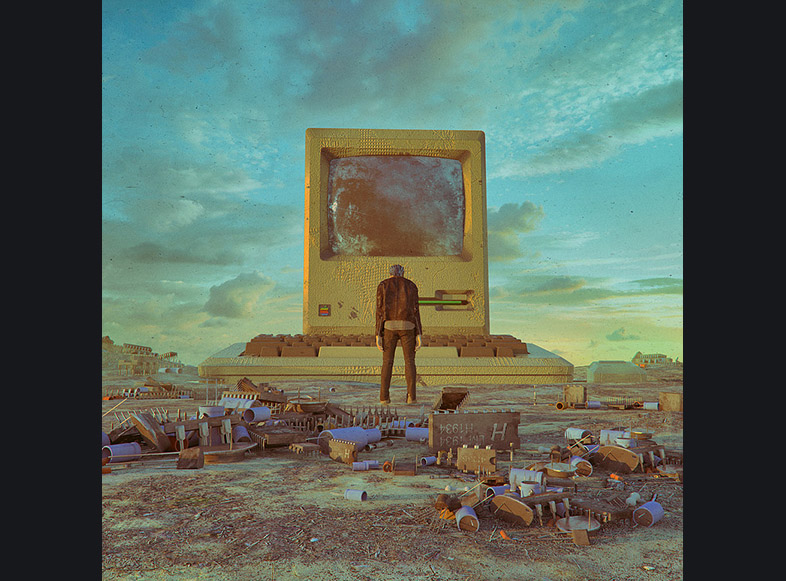 [ Image by Beeple ]
[ Image by Beeple ]
……
In the coronavirus Twilight Zone we are still disconnected amidst the mainstreaming of life-affirming stay-at-home communication technologies. If our primary contact with people in 2020 is electronic, then we can’t have real feelings. We may get vast knowledge of what’s going on via computer network, but we cannot know each other; that is the price of isolating people.
Most Americans view pandemic restriction and seclusion as a marathon test of the will versus fear campaigns and social decay. Some have come up with soul-stirring methods to reunify our humanity through technology, and they resonate across a temporarily fragmented species travailing far from the baseline urge to mingle. Humanity still outshines the digital simulacra: we choose our level of intimacy, we know how to use our best judgment, and intuition still completes the conversation whether we like it or not. So, all is not lost.
…
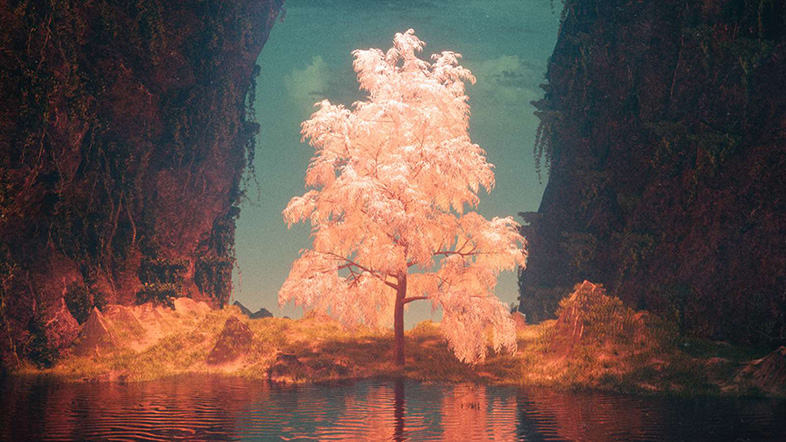 [ © Beeple ]
[ © Beeple ]
…
For others, the Covidian solitudes didn’t alter their social lives at all. It’s not a negative or a positive: one kind of lifestyle has been stifled beyond all prior belief, while another has been amplified and validated against our cultural aversion to lonerism (or, as its advocates prefer to believe—a sense of serenity, rugged individualism, staying true to one’s self, and/or resisting the temptation to be fake for the sake of the collective). As one bar lowers, another is raised on the outskirts of town. Which omen-bird landed on the nearest twig? Was it the apocryphal bluebird of contentment, or the wren of despair? The day is ripe with a little bit of both.
Voluntary solitude is a kind of freedom, a delight. Some are never less alone than when by themselves. They see loneliness as a discomfiting poverty of the self, while solitude is seen as richness. Arthur Schopenhauer delivered high praise to the condition: “Solitude is the fate of all outstanding minds—it will at times be deplored, but it will always be chosen as the lesser of two evils.” His endurance is leveraged to gain social traction, success and power by being publicly cohesive in direct proportion to the remoteness of his social access point. You cannot always find it in other people, contradicting the hype that “we’re all in this together”—such slogans are blunt ideological marketing, a hackneyed balm for a weary nation, and they mean well despite their artificiality.
…
 [ © Beeple ]
[ © Beeple ]
…
The Russian-American author Gary Shteyngart warmly mocks the unknown while tapping into a vein of pure gold: “Maybe this is who I really am. Not a loner, exactly, but someone who can be alone.” The British poet and cultural critic Matthew Arnold echoed the best of history’s dour and stoic philosophers as he rode his proverbial one-man sloop into shore on the coldest wave of them all: “This truth—to prove, and to make thine own: ‘Thou hast been, shalt be, art, alone.’” Although alienating at first glance, it builds a lair of reason far from the hypocrites who are impervious to irony.
Scanning pensively for social-media connections and other areas of need can raise the suspicion that we’re walking the Earth as fancy monkeys who cannot survive without the troop. That rubs right along the mordant edge around ego validation and the misanthropic abyss.
In due course, people do not trust misanthropes or anyone too sardonic or reclusive. Under the extreme circumstances of a prolonged quarantine, the brooding ego might endorse the getaway and disconnect from social depth as sensibility finds space to breathe and reconnoiter, so that it might find its way back to square one when the uncanny shadow-life of contagion crisis and global lockdown ends. When we are adrift, by instinct we hunt for anchorage and the grand denouement.
…
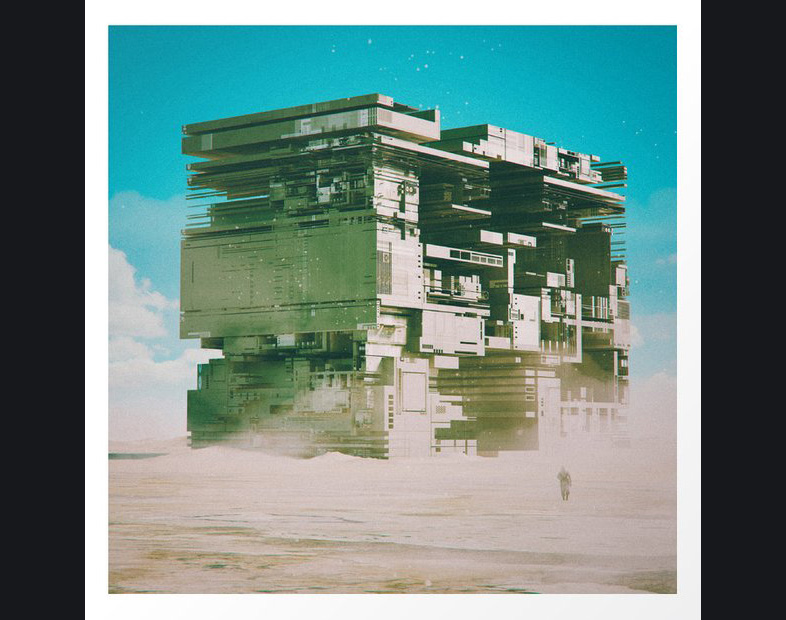 [ © Beeple ]
[ © Beeple ]
……
Identifying Value in “Time Stretch”
The Covidian solitudes can knock into hidden phenomena, the kind of immaterial things that were easily overlooked in the hustle of normal pre-pandemic human activity. For example, those familiar with marine weather and events can reorder the meaning of days in terms of “swell duration”—an alternative time-stretching measurement available to anyone dedicated to the sea. If you enter the surf as the new swell arrives, it doesn’t care if it meets you, and it is not greeting you with its frequency. In the Age of Sail (16th to the mid-19th century) the monotony of oceangoing days became a blur, and so many sea shanties were written to be imbued with romantic vanity for those who cannot fathom their fates—like a joke oft told, until one realizes the joke was on them. Fending off scurvy and mutiny in the doldrums regularly drove men mad. Around the horn through white-capped straits in a slow-going vessel, the battered bow of time bends surreal before Salvador Dali’s destabilized “melted clock” while a quasar bursts through a black hole 70 million light years away—a luminosity thousands of times greater than a galaxy such as the Milky Way—and they will answer back on the folly of time… in due time.
The liquid energy moves through you—old, salty and indefatigable. It turns out the ocean is probably most-loved for its indifference to humankind and everything else… the ultimate “social distancer” which in fact brings our own social distance into clearer focus. Be grateful that the sea is so mysterious and cruel, so that we may better understand what is definite and kind.
…
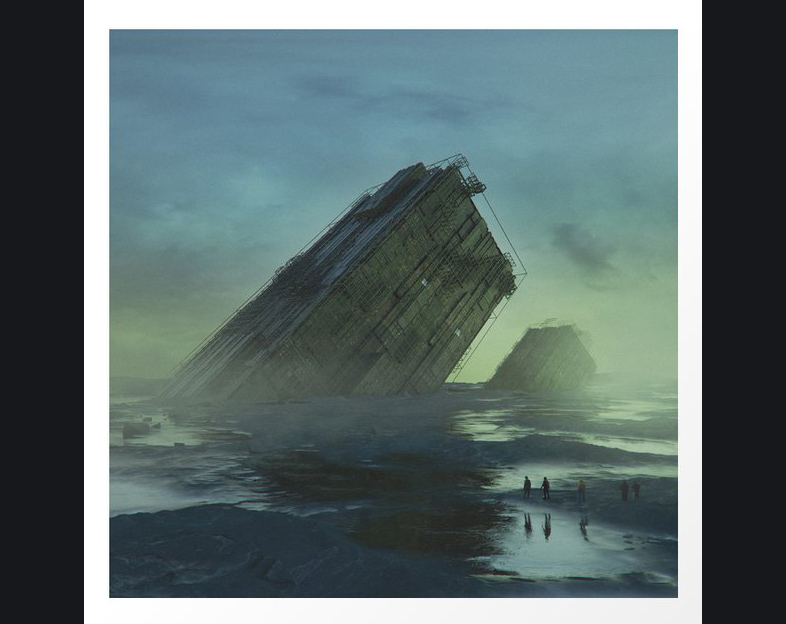 [ © Beeple ]
[ © Beeple ]
…
If the ground swell should rise for 19 hours, elongating the dominant period between surface-gravity waves (i.e., “swell”), it’s now telegraphing its behavior—it might hang around your local beach for days, maybe 80 hours if a deep Aleutian low pressure system holds its pulse across the North Pacific. By training and charging headlong into asymmetrical risks condoned by fitness and mastery alone, an epic of water contact can ensue, then ascend, and then elegantly break apart. Drink in the energy’s peak tones, the steady rhythm of a prolonged plateau, the fade, and the final decay of a swell—which results in its oblivion.
This swell “timed” outside of uniform time isn’t alone out there. Instead, something borne of planetary dynamism pours in constantly from the four corners of the world—several younger ocean swells have since arrived to overlap this old one, to refill and replace it, in rotations and generations, forever.
By this example the metric of time was measured in force duration (of nature), impressed upon the glazed ocean not in days or minutes, or even moon phases. The so-called spirituality of the surfer is forged loosely through the sequences. You can still call it an “80-hour swell” if you desire linear references, but it lays out an argument for existing outside of technical time.
A part of you can experiment with living and dying with the swell, some microcosm of life. The concept of “Tuesday” and billing cycles can dissolve away, but eventually they’ll call you back for all practical purposes. “Swell duration” living, when it took hold, was sublime in the time-warped age of Covid… indeed, abstract and slightly below the lime.
…
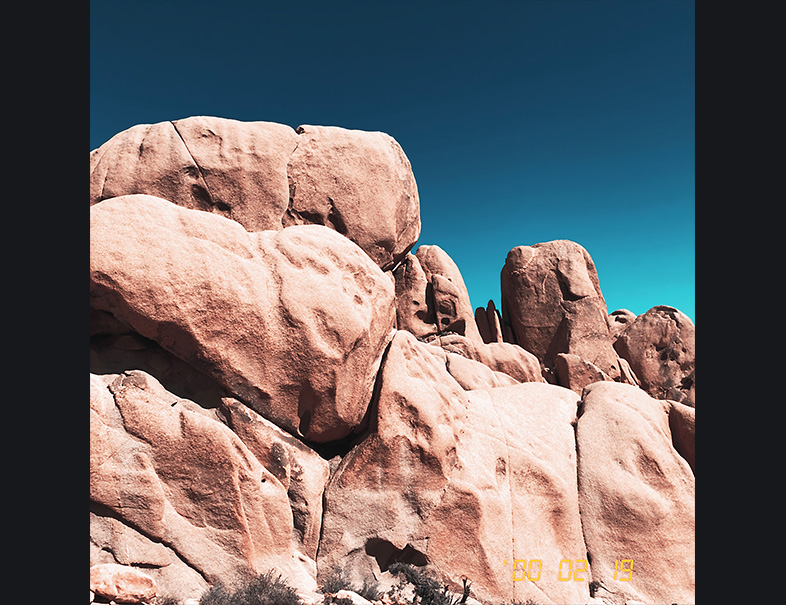 [ image by DEM ]
[ image by DEM ]
……
Identifying Value in “Deserted Time”
In late February I spent 11 days in the Southern California desert, knowing full well dread Virus might soon take the lead role in human affairs. I was among the lucky ones who trekked free and easy in 2020, before it all went spooky.
I pictured never returning to the population centers, then and now. It has made an enormous difference in tempering the isolation even if the memory has expired, been abused repetitively even (nostalgia is a double-edged sword)—at which point it becomes a mirage or a ghost of whatever unfettered destiny was enjoyed ahead of the plague era. I write this only because I think others can relate.
The healthy side of isolation can be seen in the desert sojourn, and Joshua Tree National Park is one of the world’s finest “unsocial platforms”—there’s no computing for what is politically incorrect, emotionally dead to the world, woke, broke or maladapted to the atomized ways of mass societal surveillance—digital otherwise, only lately immersing ourselves in the hive of Facebook, Snapchat, Twitter and Instagram.
…
 [ © DEM ]
[ © DEM ]
…
In needing advice beyond popular self-help, a greater value is placed on knowing the substance of self. To that end, the desert can fine-tune and settle hidden or inscrutable areas of discontent as it quiets the rat race of cities, societies, the workplace and other modalities. It seems predictable that we’d want to continually milk the dwindling benefits of its memory as the pandemic grinds through its third quarter; by March 2021, our annus horribilis will be complete. Given a year spent surrounded by misery and restraint, you’ll certainly know the difference when Fortuna and the mirabilis come back around, and we want to be there so we can feel the difference! Until then, the sun may shine with integrity on a Sphinx-like moment for only 30 seconds, yet that might just be enough for a saving throw.
The grim flip side oozes over the city hundreds of miles from this desert refuge, as if every edifice and rooftop in the metro area were quickly slimed by an aggressive toxic mold. What makes a novel coronavirus tenacious? The discharge of fresh disease has washed ashore and strives endlessly to assimilate us, to rule our fluids, destroy our way of living, and divine our future path. If cornered, it will mutate and duck out of sight. We want to head back to the population centers to re-engage the urge to circulate and make money. Should you dive into the circumstance? Life’s basic needs often demand such reentry whether we like it or not, so the answer is probably a non-negotiable “yes.”
…
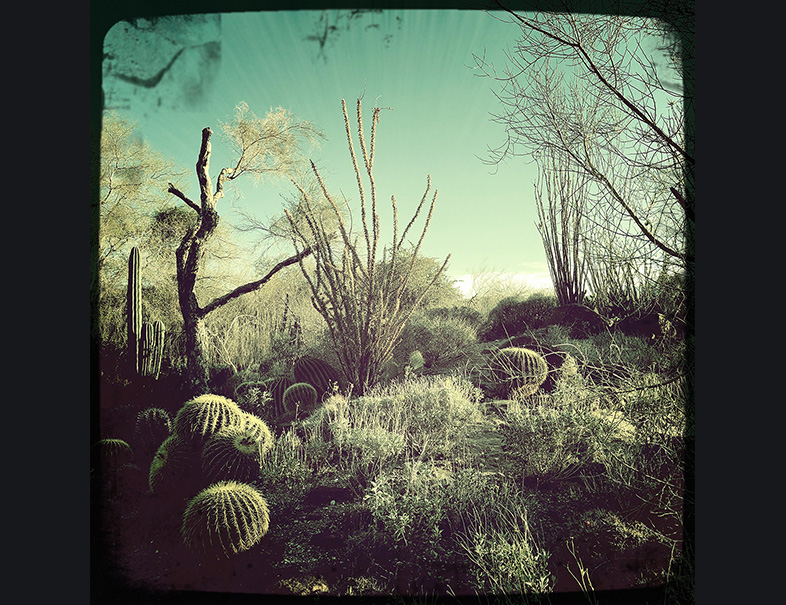 [ © DEM ]
[ © DEM ]
…
As the antipode of the above scenario, the Mojave and Sonoran deserts are assertively bizarre to the point of fiction. In the unmapped corners and off-trail badlands you stand in the convergence zone between these two eerie topographies. Your audience includes diamondback rattlesnakes and bighorns, extra-large roadrunners, the ancient pot-bellied chuckwalla, a dusty land tortoise, 15 kinds of bats and seven varieties of owl. The tectonic desert hardscape is unyielding in the backcountry, yet teeming with life and randomly dotted with lush palm-studded oases. Where you were once common, you’ve ended up rare and exposed in their company. Rarer still, there is no GPS or cell signal. If you die, the kestrels, eagles, falcons and shrikes may see it first. Certainly no human is coming for you if you’re deep enough into the outlandish. The coyotes and other night creatures will devour part of you at sundown, and by day the carrion-loving vultures will descend upon whatever’s left.
Desert locals see something nonthreatening, unpretentious and reaffirming in that notion, as if nature asks rhetorically “who wouldn’t rather die here—or be eaten by wolves in a snowdrift up on Mount San Jacinto—than desperately pinned in a hospital room, hooked up to a dozen beeping machines and surrounded by strangers?”
…
 [ © DEM ]
[ © DEM ]
…
When distortions of the human world are revealed, there’s a power and a responsibility to clarify. Previously unknown epiphanies are accessible in the primitive desert realm, in part because we can better gauge the relentless and frenetic drive of innovation, technology and human advancement by removing ourselves from it. In taking an inventory of our greatest successes and idiocies, a solo hiker may land a foot on the tripwire of quixotic distortion in all things:
“If the distortion begins at 5, why does the dial go up to 10?”
In the quest to unravel an answer that is both Socratic and life-affirming, the desert slowly opens up the traveler to the unknown. The wise ones believed and told us don’t fight it; it’ll come preternaturally as it concerns our need to develop knowledge from a basal state devoid of human or societal interference.
Like a feathered wedge of black obsidian, the territorial raven spotted me and silently followed me across the mesa, through the ravine, past the talus cave, and he already knew it better than I:
“The dial goes to 10 because we are relentless.”
…
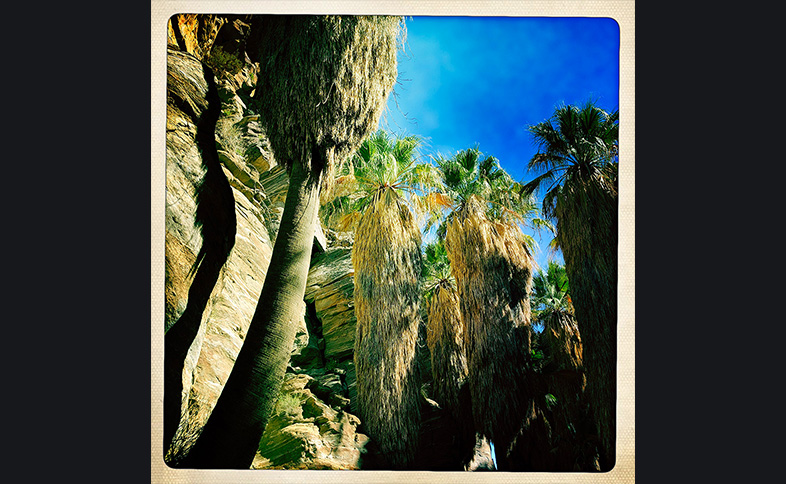 [ © DEM ]
[ © DEM ]
…
That’s a modern take for our times, perhaps better served by closing with an upbeat, all-encompassing elder nugget from Robert Louis Stevenson: “And this world has no room for cowards. We must all be ready to toil, to suffer, to die. And yours is not less noble because no drum line beats before you when you go out into your daily battlefields, and no crowds shout when you return.”
…
 [ © Beeple ]
[ © Beeple ]
……
The Shroud Lifts as California’s Hot Spots go Cold
South and west of the park boundary lays legendary Palm Springs. Like any other socially-connected hub of human affluence and activity, it faltered and went dissonantly dark under the pandemic’s dystopian pall, and became temporarily meaningless to our current culture. Suddenly the evidence of a modernist wasteland of excess and overcrowding is revealed. Palm Springs certainly isn’t the only one. Las Vegas went down the same path. A similar vibe seemed to resonate within L.A., San Francisco, and wealthy coastal enclaves from San Diego to Seattle. Any desirable district, any state, same outcome—given the scope of the disaster, we were afforded the chance to become less skeptical about their irrelevance being just one day away.
Seizing upon the thing money cannot buy (or buy back) at any price, is leveling, particularly in major cities. Metro inhabitants have responded to their degraded anti-landscapes with aversion and the trepidation of doom. Adaptability can implode swiftly amidst the cultural sabotage of Covid-19, exposing a sort-of comedy about moderns struggling to keep their chins above the rising sea of their status anxieties.
…
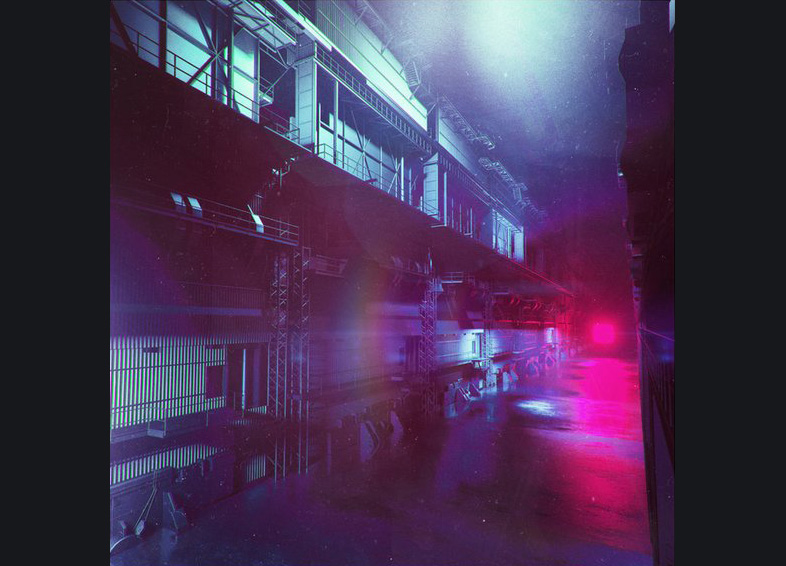
…
These are desolate regions, Blade Runneresque, like the monochromatic inner landscape of people whose lives revolve around the consumption of goods and the enticements of self-referencing PoMo salvations, and whose moral makeup is the curious contemporary combo of hedonism and earnestness.
…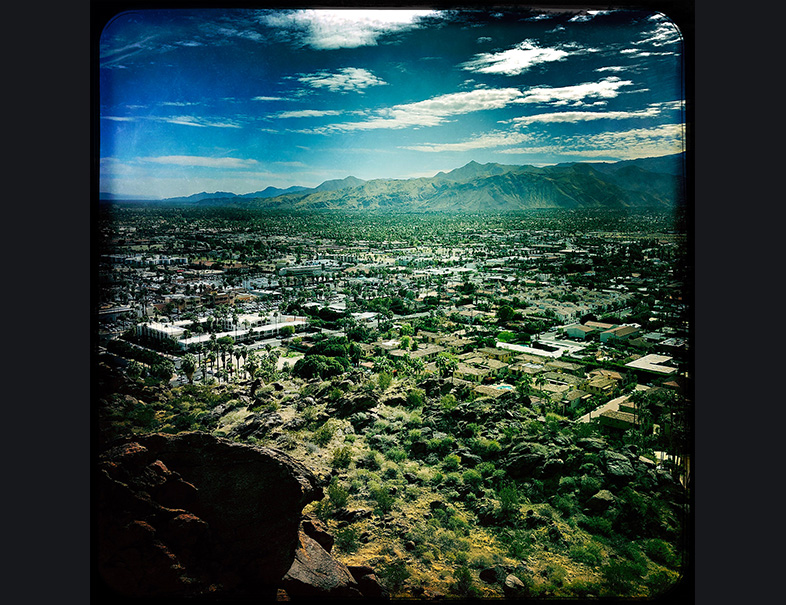 [ © DEM ]
[ © DEM ]
…
There are elements of a counterculture soap opera in places like Palm Springs, although the tone is comedic (specifically, satirical) rather than tragic. The lifestyle appears suspended in a time lag, focusing squarely on its aging Baby Boomer residents’ interest in various sports, New Age beliefs and human potential movement groups (including the oft-parodied EST, the more legitimate transcendental meditation, plus freeform consciousness-raising through all sorts of drugs, and rebirthing—a breathing therapy that is now widely discredited); the societal consequences of their unconventional and arguably lax child-rearing techniques; and their embrace of a number of revivalist 1970s and 80s subculture fads, such as retro-chic fern bars, jogging, and a slavish devotion to organic food. It hearkens back to an age of optimistic recklessness, when there existed a belief that wife swapping and open marriage was more widespread than it actually was in the giddy dawn of cocaine use and frequent divorces. Many things associated with the human potential movement wind up being merely mimicked and satirized than they are adhered to, including the Fischer-Hoffman Process, radical feminism and Sierra Club membership, even though they are seemingly ubiquitous. Their kids were sent to free-form summer camps offering survival training and “spontaneous sensitivity sessions.” The eternal sunshine of the spotless mind, persistent and replete with uniquely west coast American elements that were described to some degree by author Tom Wolfe in his 1976 non-fiction essay “The Me Decade and the Third Great Awakening,” particularly as manifested in the lives of people then between the ages of about 30 and 45 in flourishing parts of California. Many of them still speak a particular jargon or lexicon left over from the 1980s, saying words and phrases like “Really” a lot (to signify assent).
The core complex is like a crystal box containing an alien substance constructed of faux sincerity, dazzling BS, and the noise of luxury-level virtue signaling. Covid-19 has, in a way, silenced all of it, which leaves us wondering if it ever really mattered in the first place.
…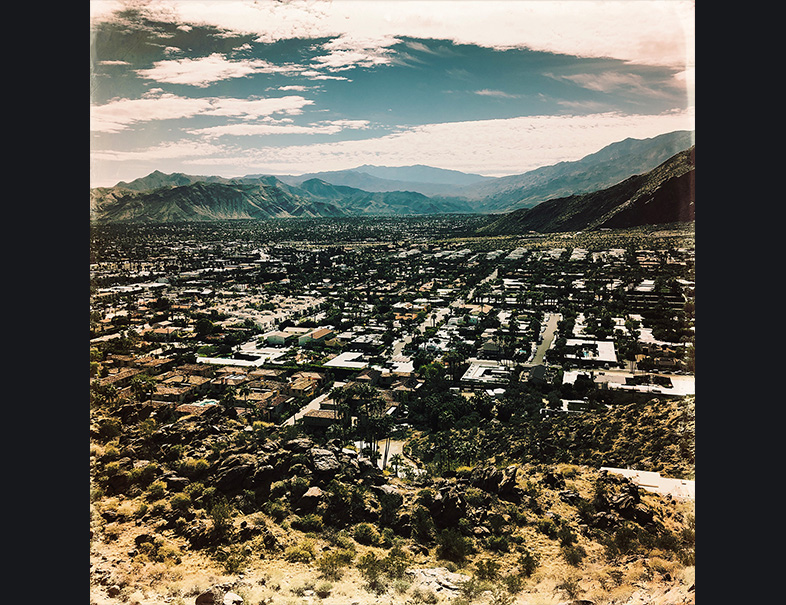 [ © DEM ]
[ © DEM ]
…
To crack open the escape hatch, perhaps begin with a dash of Joshua Tree palette cleanser to embolden the Covid-tinged extraction process from the knotty overlapping calamities outlined above. Stealing away to any ocean, desert, forest or other open space leaves it up to “finding yourself by losing yourself” (cliché status certified double-platinum), and harnessing the esoteric powers of patience, temperance, and solitude.
There are decent, helpful people wishing you well and good in this realm, adding weight to the beguiling irony that you’ll hope to never see them in the desert—lest you catch one another rummaging as rogue savages do, seeking guidance far beyond that which is human.
……
